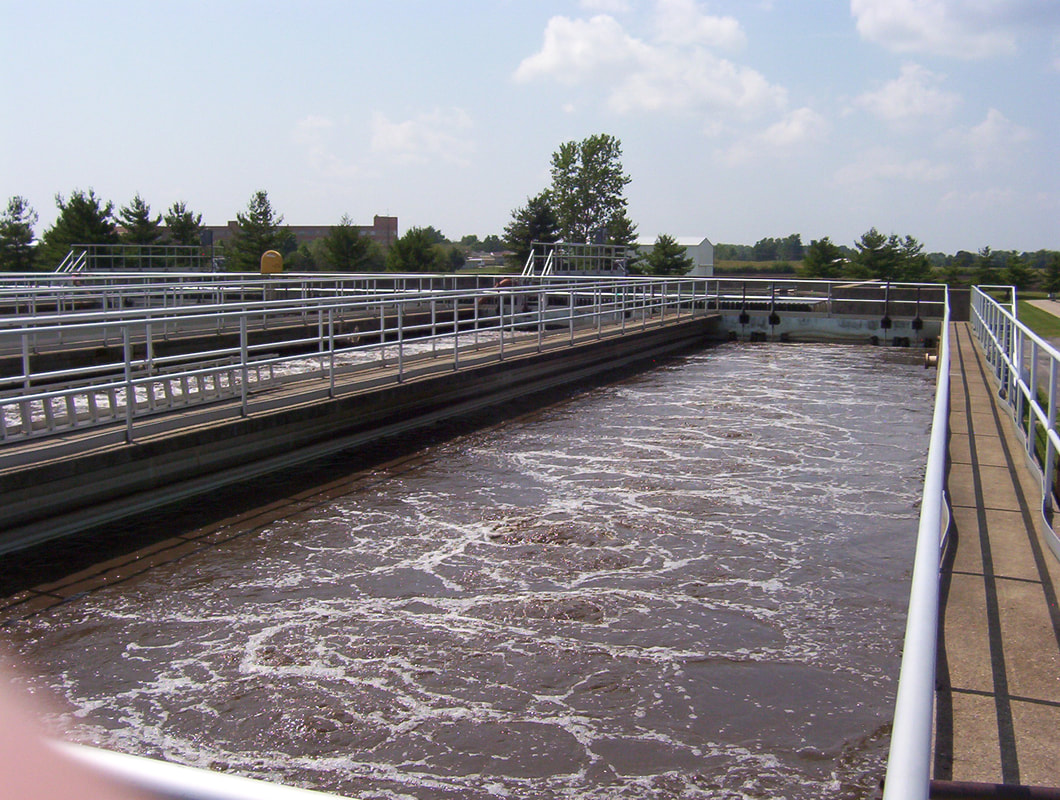- Secondary clarifiers
Hydraulic overloading is an obvious problem. But, you should also note that solids flux rates are also a limiting factor. If solids do not settle and compact, the bed depth control may be lost and clarifier fails to work properly. This is why we often do maintenance evaluations on pumps, rakes, and weirs. - Aeration (dissolved oxygen)
Oxygen transfer is also a common problem. As fine bubble diffusers become less efficient as they foul, oxygen transfer efficiency can be insufficient for maintaining oxygen residuals in the floc. - Mixing
This is more of a problem in lagoon based systems, but mixing is another possible bottleneck. Improper mixing can result in short-circuiting and failure to keep MLSS suspended in the water column. - Waste solids handling
Wasting can be limited by digester capacity, press or centrifuge functioning, or some other solids handling issue. When the bottleneck is wasting, the system often has "old slduge" and the associated fines/turbidity seen as deflocculation occurs. - Primary treatment
Here we can have insufficient primary clarifiers, oil water separators, DAF units, and even EQ tanks in need of sludge removal. In all cases, you have a potential for solids, oils, or high COD waste to enter the biological unit.
|
Every waste treatment system has some bottleneck that limits treatment capacity. Many systems can operate in the short term above design capacity. However, eventually you will encounter problems controlling operations. At this point, you can supply additional oxygen, use polymers to increase floc density & settling rates, and even use activated carbon or chemical oxidation to adsorb excess organics. In today's post, I want to focus on the most common bottlenecks in biological wastewater treatment systems. Make sure you know where you have bottlenecks to prioritize capital upgrades, or develop operational plans that minimize the bottleneck impact. Here are the most common bottlenecks:
Comments are closed.
|
AuthorErik Rumbaugh has been involved in biological waste treatment for over 20 years. He has worked with industrial and municipal wastewater facilities to ensure optimal performance of their treatment systems. He is a founder of Aster Bio (www.asterbio.com) specializing in biological waste treatment. Click to set custom HTML
Archives
April 2024
|


 RSS Feed
RSS Feed